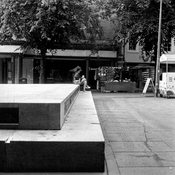Were you there with me when I was lugging an 8x10 system and big maple tripod up to high altitude just to find zits and cracks all over the images afterwards? - pretty much every other sheet in the boxes with two different batches of the 200 product, several years apart, were flawed. What am I supposed to do, load six holder and hope for one or two good shots, with the light constantly changing? How many train wrecks does one have to go through to figure out that might not be the best way to travel? But I have NEVER had an analogous problem with Kodak, Ilford, or Fuji sheet film. And the only roll film problems I've ever had was with the last batch of Efke 25 just before they closed down permanently (yeah, I'm aware of the brief backing paper issue, but never encountered it myself).
Too much work goes into just getting to location to gamble with the film itself, even if the odds are now small, which I seriously doubt they are. The complaint(s) behind this thread is (are) only two years old. The only thing Foma Pseudo-200 has going for it is a cheaper price, and there's nothing cheap if you have to shoot at least two shots hoping one will turn out usable. Even the shots I was able to salvage from all kinds of locations generally required a lot of tricky retouching. Then, given its utterly miserable long exposure characteristics, it's a quite limited film. Too bad, because it has the longest straight line of any film currently on the market, and can handle extreme lighting situations particularly well.
You get what you pay for. End of story.


 Two out of four cameras I've been shooting Foma 200 have a straight film path with minimal bending. Perhaps the degree of fragility varies between batches, but I have not observed any differences in results between cameras. The rolls I currently have (purchased last December at freestyle) look horrific [1] regardless of hardware.
Two out of four cameras I've been shooting Foma 200 have a straight film path with minimal bending. Perhaps the degree of fragility varies between batches, but I have not observed any differences in results between cameras. The rolls I currently have (purchased last December at freestyle) look horrific [1] regardless of hardware.



